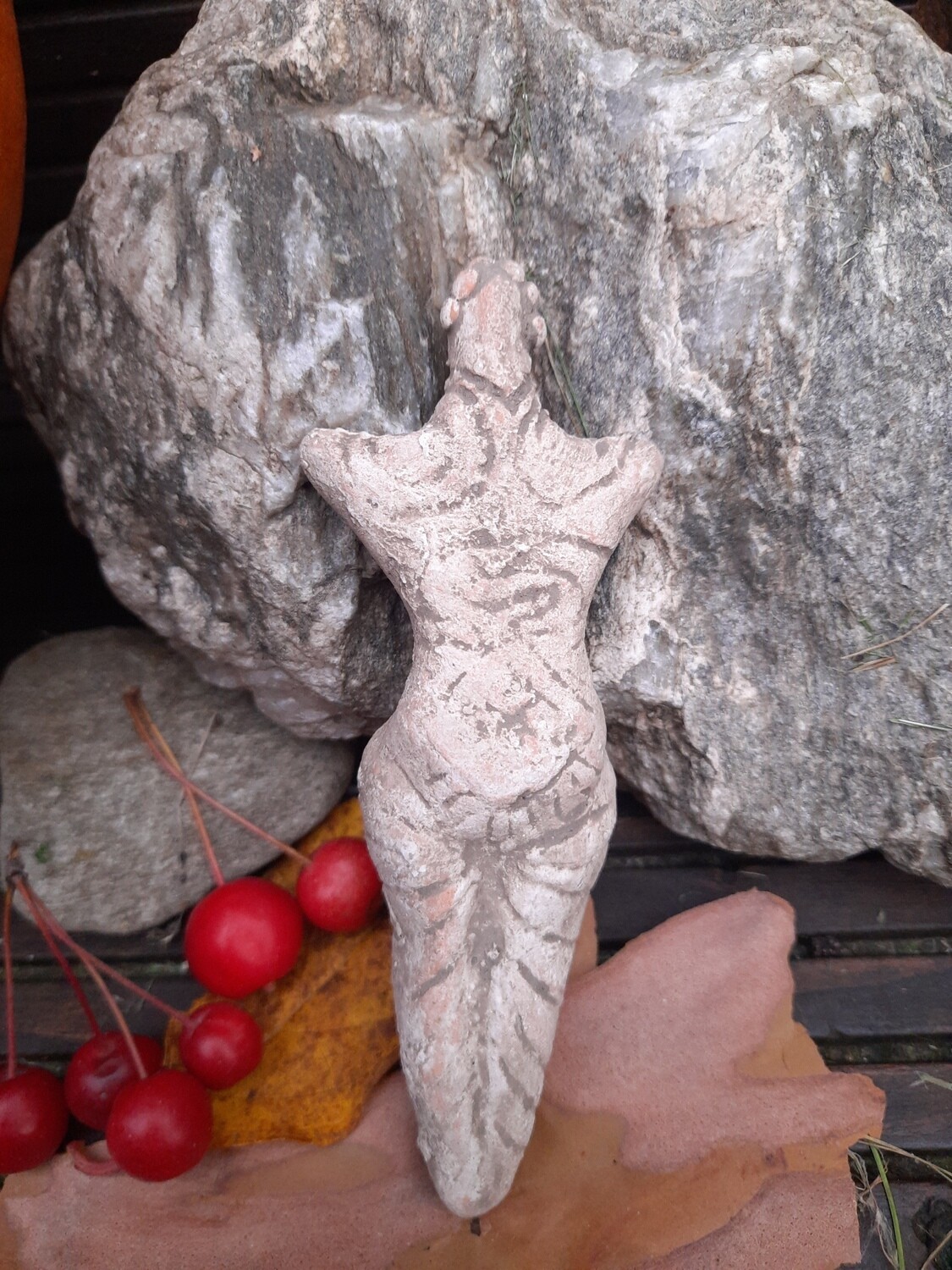Handmade Snake Mother Goddess, First Gods of Old Europe, Neolithic Terracotta Replica
Handmade unique typical to Danube culture goddess figurine.
Many scholars believe we can see tattooed body of Goddess or ritually painted one with Ochre*.
Inspiration: Danube culture goddess
Size: 10-11 cm / 4 - 4.3 inches
Material: fired clay - terracotta
The term Danubian culture was coined to describe the first agrarian society in central and eastern Europe. This prehistoric culture found along the banks of the Danube River was once the largest civilization in Europe. There lived in the Lower Danube Valley and the Balkan foothills people who were ahead of their time in art, technology and long-distance trade.
Ochre in Prehistoriv World
Yellow and red ochre pigment was used in prehistoric and ancient times by many different civilizations on different continents. Evidence of the processing of ochre to a lesser extent, in Africa and Europe has been dated by archaeologists to 300,000 years ago, evidence of use in Australia is dated to 50,000 years ago, and new research has uncovered evidence in Asia that is dated to 40,000 years ago.
Pieces of ochre engraved with abstract designs have been found at the site of the Blombos Cave in South Africa, dated to around 75,000 years ago. In Wales, the paleolithic burial called the Red Lady of Paviland from its coating of red ochre has been dated to around 33,000 years before present. Paintings of animals made with red and yellow ochre pigments have been found in paleolithic sites at Pech Merle in France (ca. 25,000 years old), and the cave of Altamira in Spain (ca. 16,500–15,000 BC). The cave of Lascaux has an image of a horse coloured with yellow ochre estimated to be 17,300 years old. Neolithic burials may have used red ochre pigments symbolically, either to represent a return to the earth or possibly as a form of ritual rebirth, in which the colour may symbolize blood and a hypothesized Great Goddess.
The use of ochre is particularly intensive: it is not unusual to find a layer of the cave floor impregnated with a purplish red to a depth of eight inches. The size of these ochre deposits raises a problem not yet solved. The colouring is so intense that practically all the loose ground seems to consist of ochre. One can imagine that the Aurignacians regularly painted their bodies red, dyed their animal skins, coated their weapons, and sprinkled the ground of their dwellings, and that a paste of ochre was used for decorative purposes in every phase of their domestic life. We must assume no less, if we are to account for the veritable mines of ochre on which some of them lived...
The Ancient Picts were said to paint themselves "Iron Red" according to the Gothic historian Jordanes. Frequent references in Irish myth to "red men" (Gaelic: Fer Dearg) make it likely that such a practice was common to the Celts of the British Isles, bog iron being particularly abundant in the midlands of Ireland.
Ochre has uses other than as paint: "tribal peoples alive today . . . use either as a way to treat animal skins or else as an insect repellent, to staunch bleeding, or as protection from the sun. Ochre may have been the first medicament."

